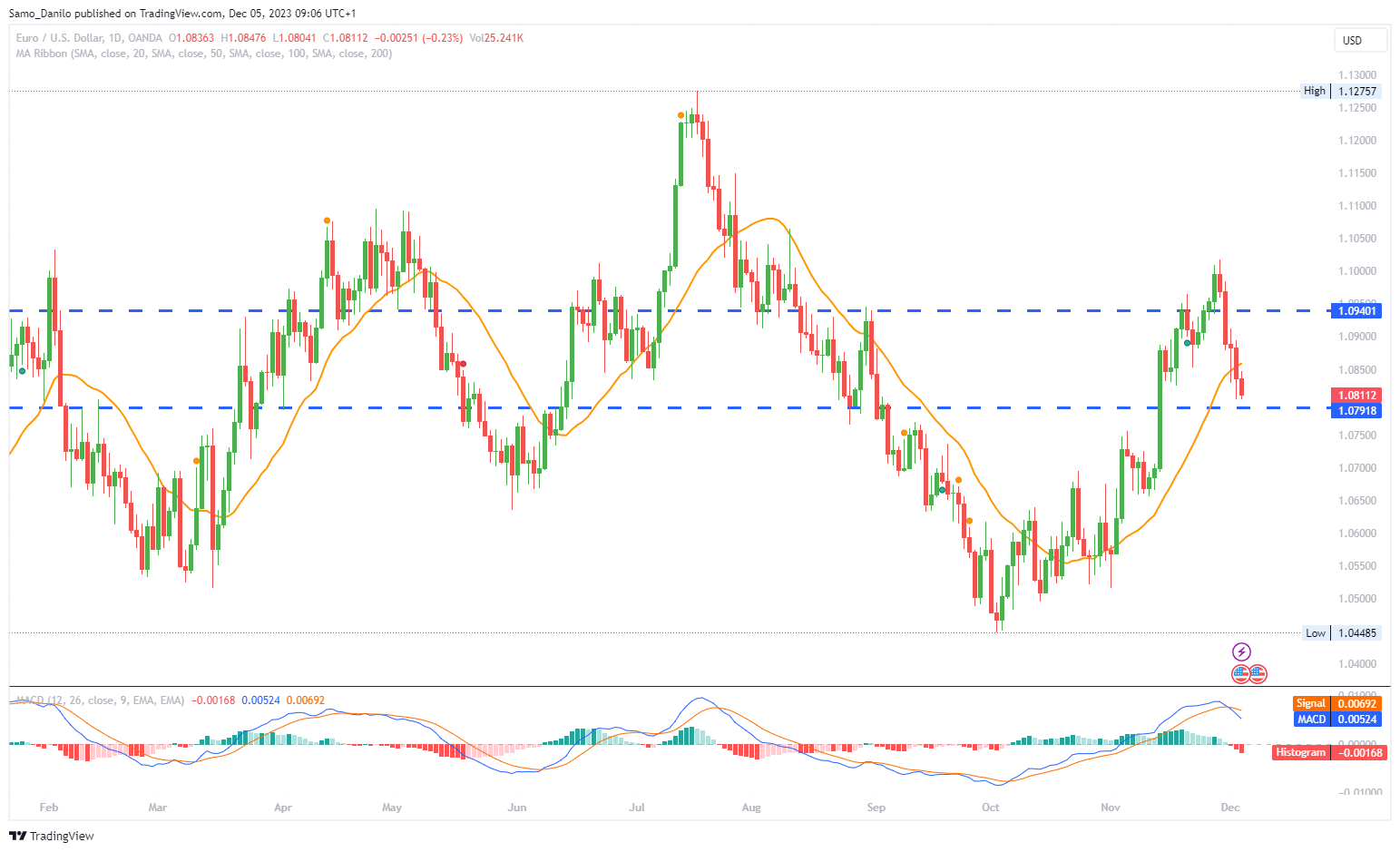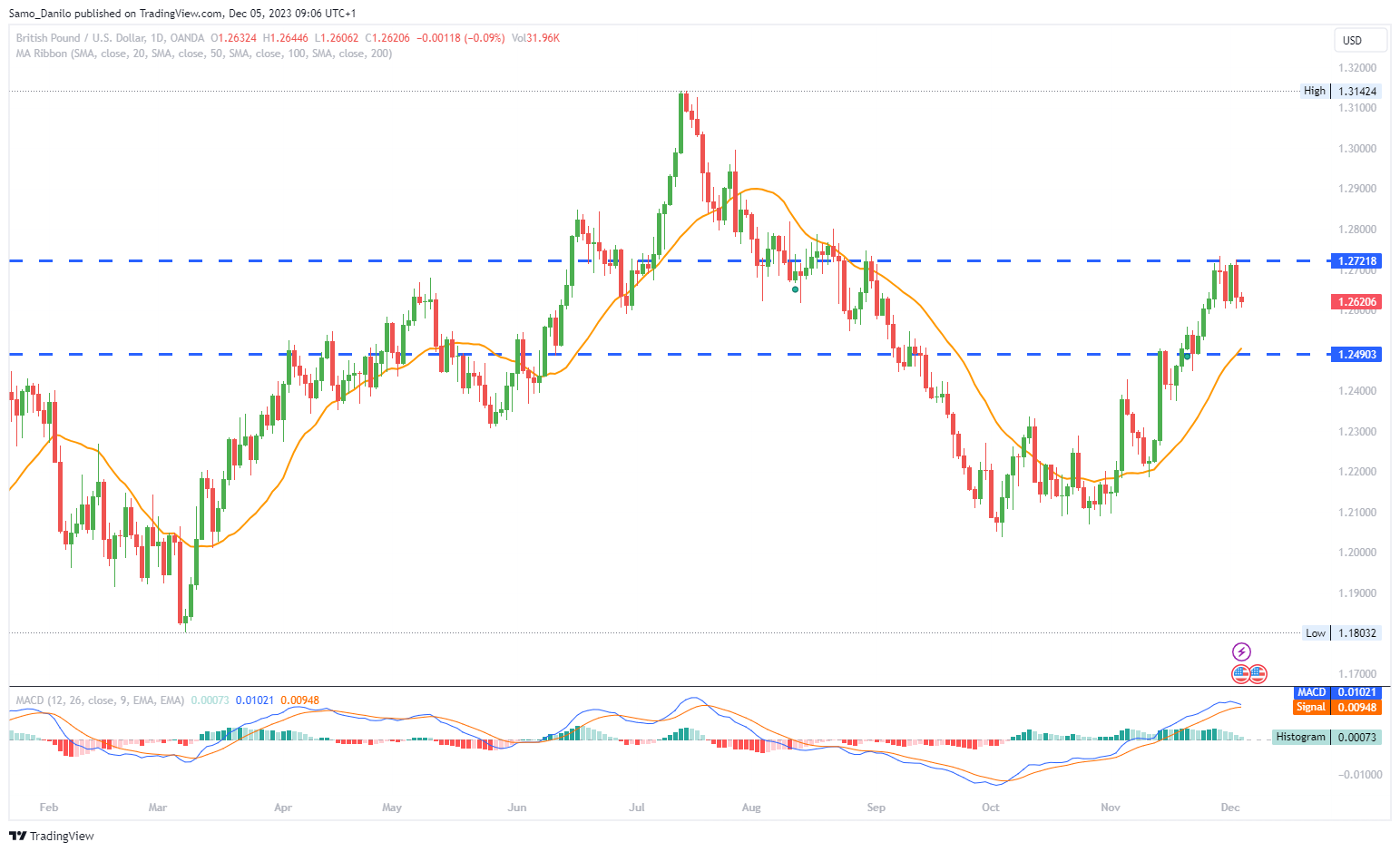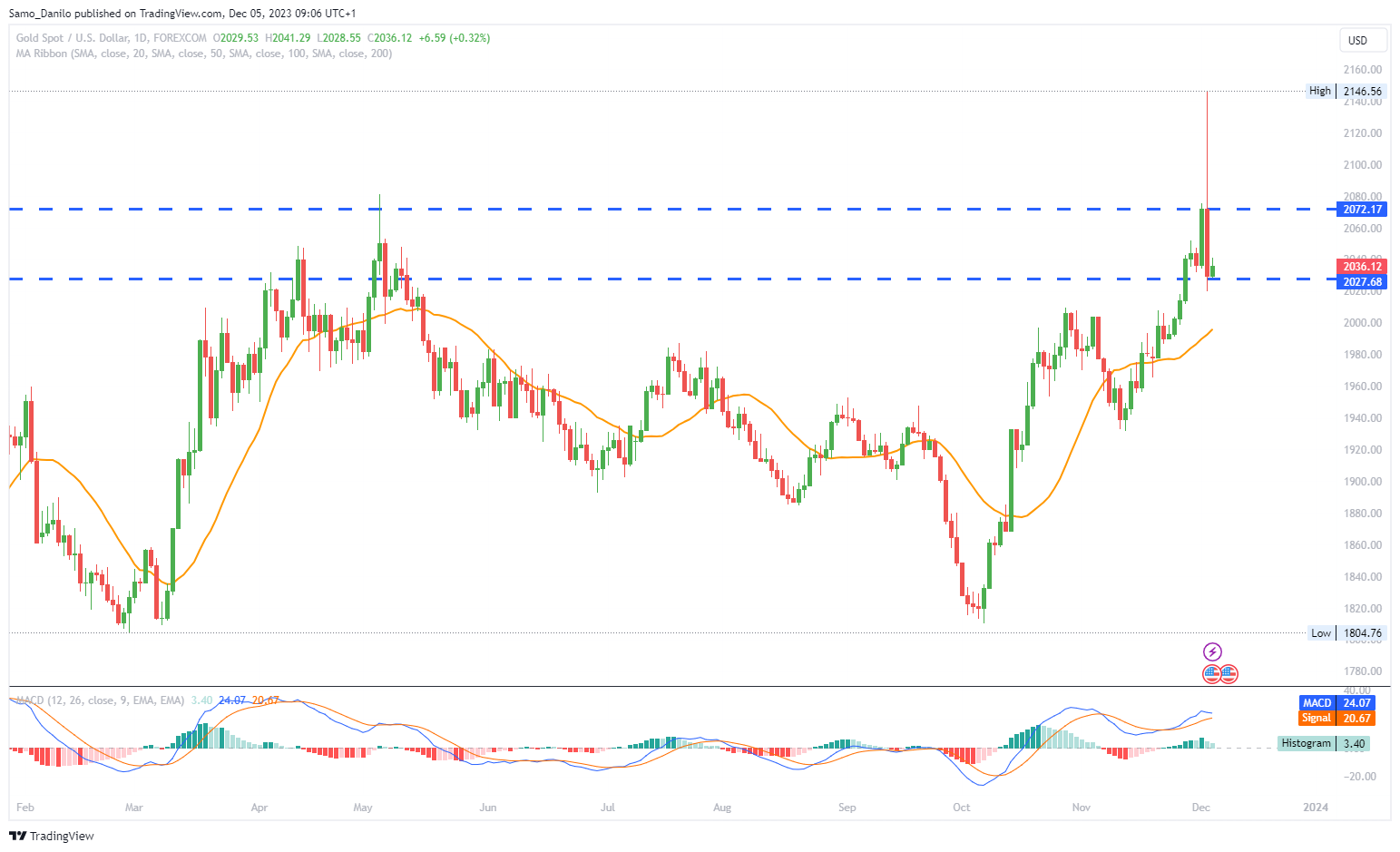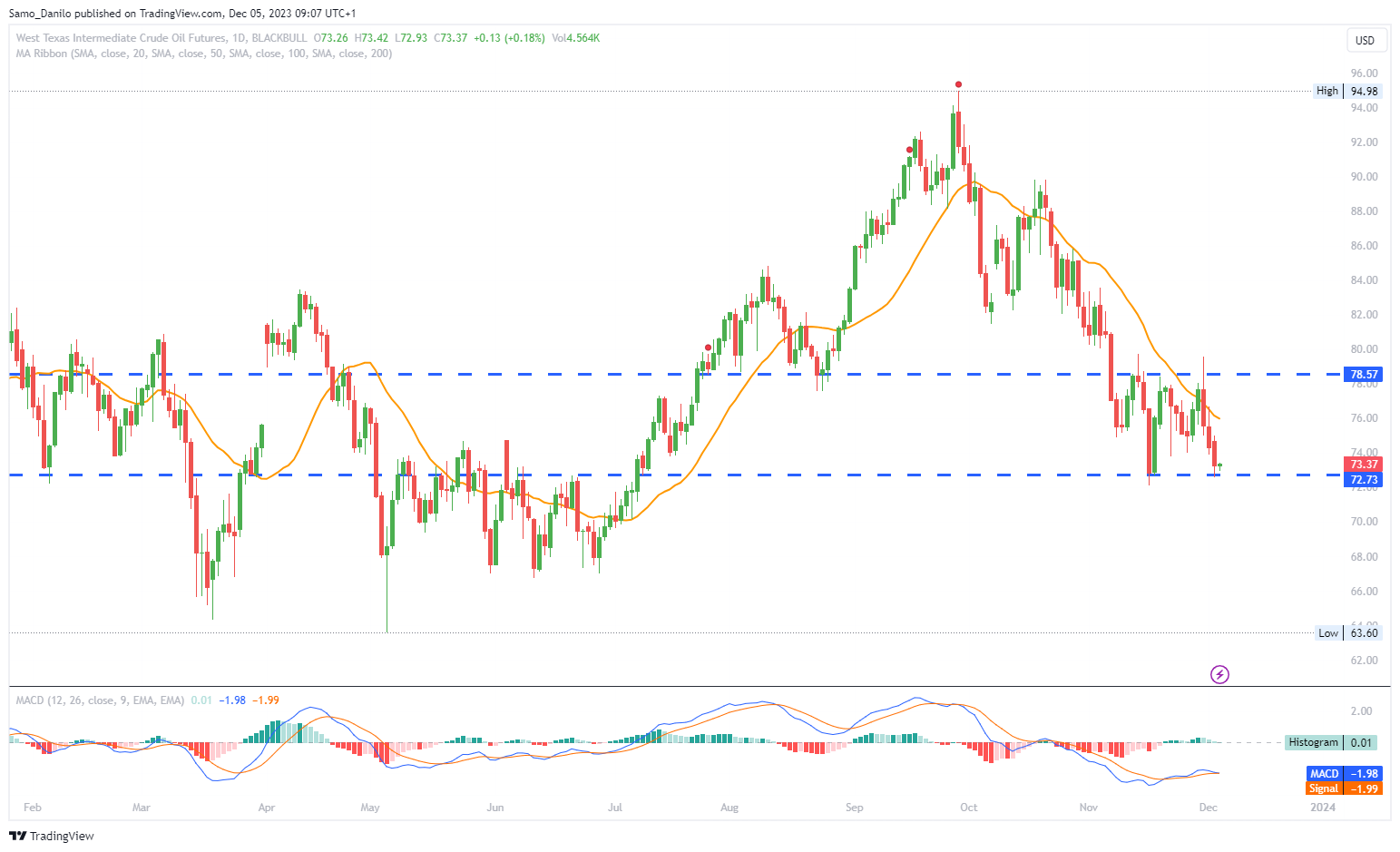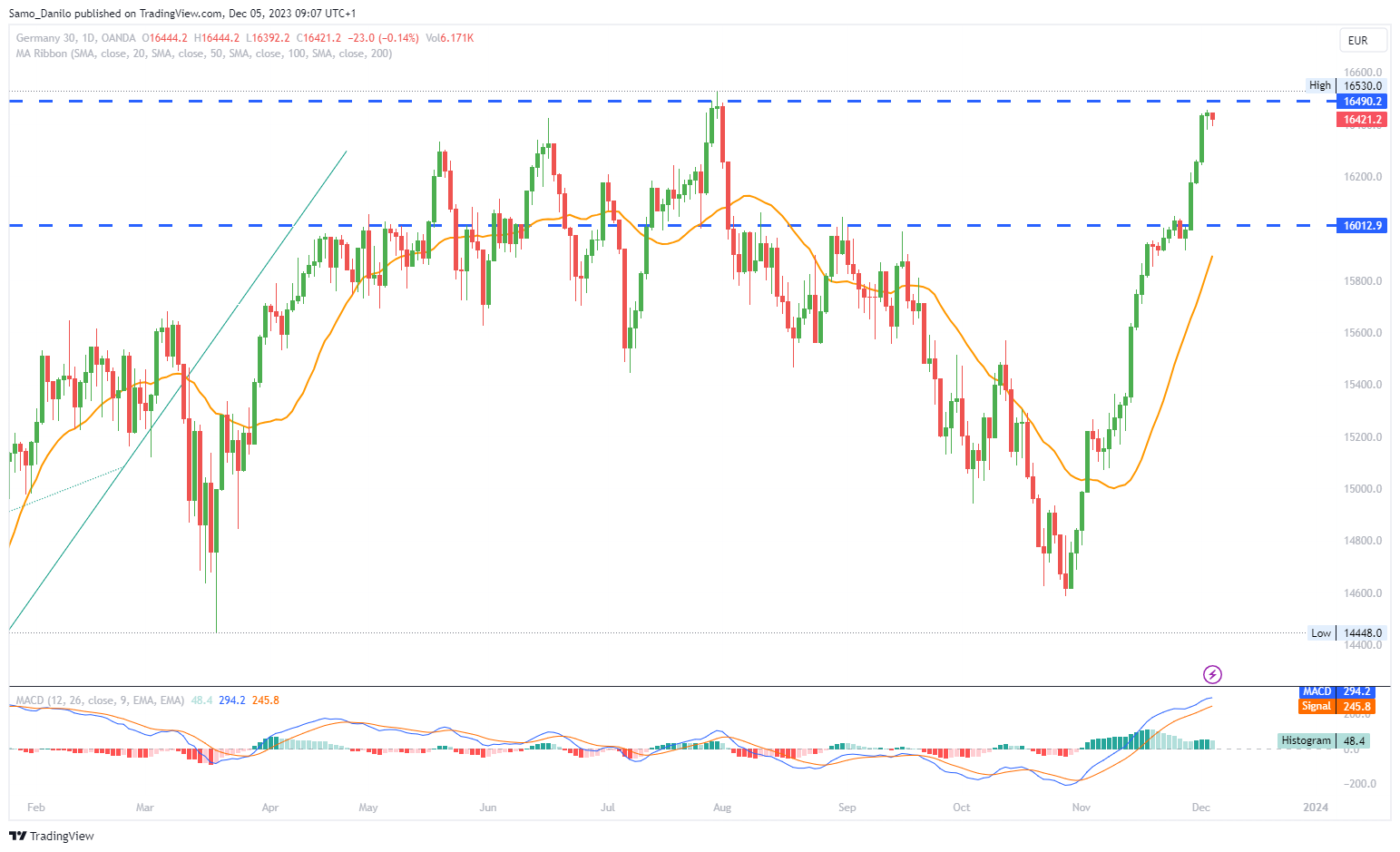EURUSD
- The EUR/USD pair extended its decline for the fourth consecutive day on Monday, breaching the 20-day Simple Moving Average (SMA) and finding support at the 200-day SMA.
- Persistent market speculation suggests that the European Central Bank (ECB) may initiate interest rate cuts ahead of the Federal Reserve (Fed), contributing to the downward pressure on the EUR/USD pair.
- Tuesday's agenda includes the release of the October Producer Price Index (PPI) by Eurostat, along with the final PMIs. Additionally, industrial production data from France and Spain for October is expected.
- The US Dollar gained strength across the board on Monday, recovering from early-week pressure. This rebound was supported by higher US yields, signaling market focus on key economic reports.
- As the week progresses, attention will turn to crucial labor market data from the United States, starting with the JOLTS report. The ISM Services PMI is also scheduled, shaping the potential trajectory of the USD.
Closing statement: The EUR/USD pair faces continued downward momentum, influenced by speculation of ECB rate cuts and contrasting strength in the US Dollar backed by higher yields. Key economic releases and labour market data will likely steer the pair's direction throughout the week.
GBPUSD
- The GBP/USD pair experiences a modest rise during the Asian session on Tuesday, attempting to extend the rebound initiated from the 1.2600 level, which marks the lower boundary of a one-week-old trading range.
- Early-week geopolitical tensions in the Middle East prompted a flight to safety, benefiting the US Dollar (USD). This demand for the USD countered the GBP, contributing to its initial decline.
- The British Pound (GBP) finds support amid diminishing expectations for an early rate cut by the Bank of England (BoE). This perspective contrasts with the accommodative stance signaled by other central banks.
- The market will look to the ISM Services PMI and JOLTS Job Openings data from the US for potential market-moving events on Tuesday. These releases can offer fresh impetus to the GBP/USD pair.
- Later in the week, focus will shift to significant US labor market reports, including the ADP private employment report, Jobless Claims, and Nonfarm Payrolls. These data points are crucial for assessing the state of the US labor market.
| SMA (20) | Rising |
|
|
| RSI (14) | Slightly Falling |
| |
| MACD (12, 26, 9) | Slightly Rising |
|
Closing statement: The GBP/USD pair navigates geopolitical tensions and divergent central bank outlooks. The upcoming US economic data, particularly labour market reports, will likely influence the pair's direction as the week progresses.
GOLD
- Gold price experiences a significant intraday reversal on Monday, retracting nearly $125 after initially rallying to a new all-time high, reaching around the $2,145 region.
- Despite the sharp pullback, the decline halts near the $2,020 area, reflecting a temporary pause in the selling pressure. This comes amid a growing consensus that interest rates in the United States have reached their peak.
- Traders turn their attention to the upcoming US Job Openings data, with expectations for a reading of 9.35 million. This data is crucial for gauging the state of the job market, following signs of a slowdown in September.
- Gold traders find support in the strong reading of China's Caixin General Services PMI, coming in at 51.5 in November, surpassing expectations. Improved business momentum in China, a major consumer of gold, is considered favorable for gold prices.
- Gold price remains sensitive to geopolitical developments in the Middle East, with traders closely monitoring events in the region for potential trading incentives.
| SMA (20) | Rising |
|
|
| RSI (14) | Slightly Falling |
| |
| MACD (12, 26, 9) | Rising |
|
|
Closing statement: Gold experiences a volatile session with a notable pullback but finds support amid expectations of a plateau in US interest rates. The focus turns to key economic data, including US Job Openings, and geopolitical events for further market direction.
CRUDE OIL
- West Texas Intermediate (WTI) prices witness selling interest as investors express concerns about oil demand and uncertainties surrounding the depth and duration of OPEC+ supply cuts.
- In the prior trading session, oil prices experienced a decline, driven by trader skepticism regarding the significant impact of OPEC+ supply cuts and the influence of a stronger U.S. dollar, which weighed on commodity prices broadly.
- Early on Tuesday, China's Services Purchasing Managers' Index (PMI) records a surge to 51.5 in November, surpassing the October reading of 50.4 and beating the estimated 50.8. This positive economic indicator contributes to market sentiment.
- Comments from Saudi Arabia's energy minister, suggesting that OPEC+ production cuts could extend beyond the first quarter of 2024, if necessary, provide some support to the oil market.
- Tuesday's data reveals a more significant-than-expected fall in U.S. factory orders for October, the most substantial decline in over three years. This dampens sentiment in the oil market.
| SMA (20) | Falling |
|
|
| RSI (14) | Slightly Falling |
| |
| MACD (12, 26, 9) | Slightly Falling |
|
Closing statement: WTI oil prices face selling pressure amid concerns about demand and uncertainties related to OPEC+ cuts. The market reacts to China's positive PMI, while comments from Saudi Arabia offer support. However, the dampening impact of a stronger U.S. dollar and disappointing U.S. factory orders complicates the overall sentiment.
DAX
- Monday saw German trade data falling short of expectations, with unexpected declines in exports for October. A more significant drop in imports underscored a weak demand environment, impacting market sentiment.
- The U.S. manufacturing sector contributed to concerns about the demand for manufactured goods, as factory orders in the U.S. plummeted by 3.6% in October. This supported speculations about a potential Q1 Federal Reserve rate hike.
- nvestor attention turns to the finalized German and Eurozone Services Purchasing Managers' Index (PMI) figures on Tuesday, providing insights into the services sector's performance.
- Tuesday's agenda includes crucial economic indicators like the ISM Non-Manufacturing PMI and the U.S. JOLTs Job Openings Report, drawing interest from investors and influencing the overall market sentiment.
- Near-term trends for the DAX are contingent on the Services PMIs and U.S. labor market statistics. Better-than-expected Euro area statistics, coupled with disappointing U.S. numbers, could offer support to the DAX at its current levels.
| SMA (20) | Rising |
|
|
| RSI (14) | Rising |
|
|
| MACD (12, 26, 9) | Rising |
|
|
Closing statement: The DAX faces headwinds from disappointing German trade data and a gloomy U.S. manufacturing sector. The focus turns to services PMIs in Germany and the Eurozone, along with key U.S. economic indicators, to gauge the trajectory of the DAX.
